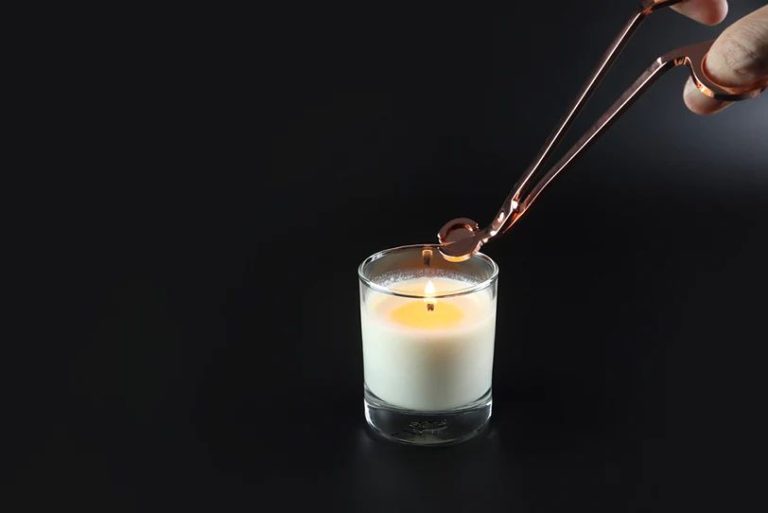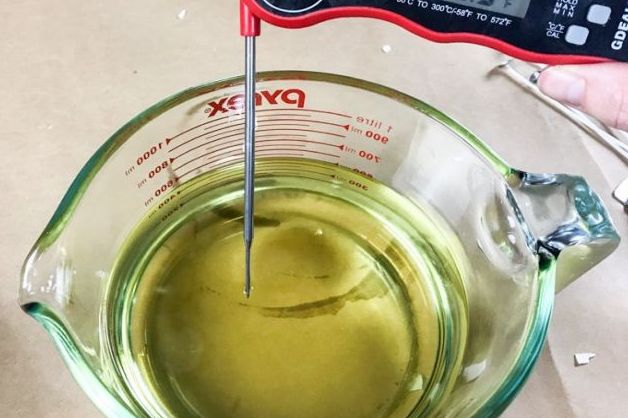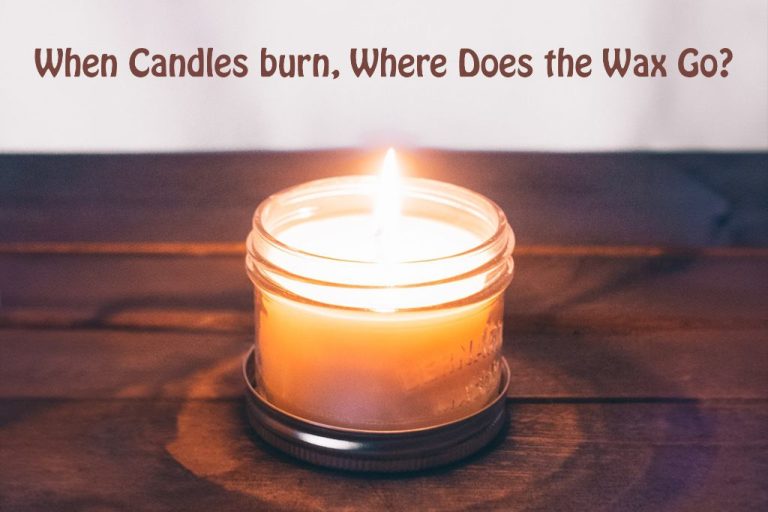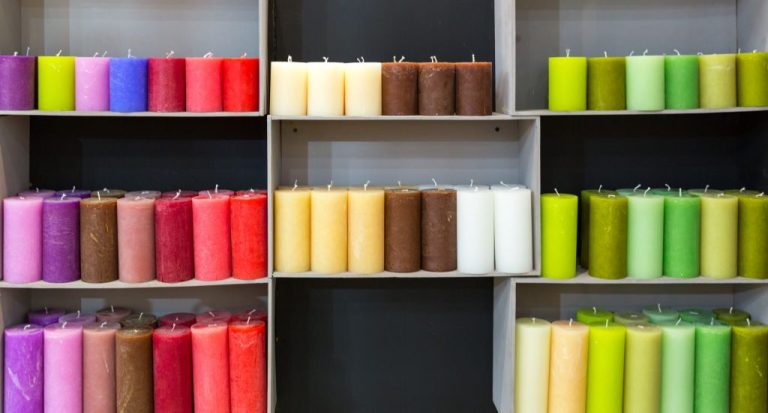Does The Water Touch The Bowl When Using A Double Boiler?
What is a Double Boiler?
A double boiler is a specialized type of cookware that uses steam as an indirect heat source to gently cook or melt foods. It consists of two separate pots or pans that fit together.
The bottom pot contains water and sits over a heat source like a stovetop burner. The top pan rests above the bottom pan, either sitting directly on top or suspended above it by a small gap. The bottom pot heats the water to boiling, and the steam from the boiling water provides a gentle, even heat to the top pan. So the food in the top pan cooks slowly at a more controlled temperature rather than over direct heat.
Double boilers are commonly used for delicate foods that need gentle heating, like custards, sauces, and chocolate. Melting chocolate and making hollandaise sauce are two of the most popular uses. The indirect heat prevents scorching or curdling the food. Double boilers allow heat sensitive foods to cook evenly at the temperature of simmering water so they don’t burn.
Does Water Actually Touch the Bottom Pan?
Yes, in a typical double boiler setup, the water does directly contact the bottom pan. The bottom pan is filled partway with water and heated to boiling. This boiling water provides the heat source for the top pan, which sits above the water without touching it directly.
As the water in the bottom pan heats up and starts to boil, the resulting steam rises and transfers heat to the top pan. So while the top pan sits above the boiling water, separated by a small air gap, the bottom pan is in direct contact with the hot water. The steam provides a gentle, even heat to the top pan, which is ideal for delicate cooking tasks like melting chocolate or warming custards.
So in summary, the bottom pan touches the boiling water, heating it to the temperatures needed to produce steam, while the top pan sits above, not touching the water itself but heated by the rising steam. This separation of the pans is what makes the double boiler effective for delicate heating needs. But the boiling water in the bottom pan is key to making the whole system work.
Sources:
https://www.webstaurantstore.com/blog/2406/what-is-a-double-boiler.html
Double boiler: Why not touch water?
byu/BigBurlyPat inAskCulinary
Why Use a Double Boiler?
A double boiler provides more gentle, even heating compared to direct heat cooking. The hot water in the bottom pan gently warms the top pan to avoid scorching or burning the food inside it. This makes a double boiler well-suited for heating delicate foods that need precise temperature control like chocolate, custards, and sauces.
With direct stove heat, chocolate can easily burn or seize up. Custards and egg-based sauces like hollandaise can curdle or separate. A double boiler allows these foods to cook slowly and evenly, preventing disastrous results. The indirect steam heat protects them from rapid temperature changes. According to chef Michael Ruhlman, “One of the first rules of cooking is that gentle, even heat works best.” The double boiler epitomizes this gentle approach.
Temperature Control
One of the main benefits of using a double boiler is the increased temperature control it provides compared to direct heat. The steam created in the bottom pot of a double boiler cannot exceed 212°F, the boiling point of water (https://tasteeurope.com/article/5-mother-sauces/). This gives you much finer control over the temperature and prevents scorching or burning delicate ingredients like chocolate, eggs, or cheese.
With direct heat from a stovetop or oven, it’s easy to overshoot target temperatures quickly. But with a double boiler, the top container heats gradually and gently as it absorbs steam from the bottom pot. You can maintain a stable low or medium heat for recipes that require very precise temperature control, like hollandaise sauce or custards (https://tasteeurope.com/article/5-mother-sauces/). The water cushion from the double boiler makes it foolproof.
Tips for Using a Double Boiler
When using a double boiler, it’s important to follow some key tips to get the most out of this cooking method.
Use proper pot sizes – The bottom pot should be larger than the top insert or bowl. This allows steam to circulate freely around the top vessel. Make sure there is 1-2 inches of clearance on all sides.
Allow for water evaporation – Check the water level occasionally and replenish as needed. If the bottom pan boils dry, the food can scorch. Keep a kettle of hot water handy for topping up.
Stir food regularly – Stirring helps prevent hot spots and ensures even heating. Be especially diligent when cooking foods like custards that can curdle.
Consider a DIY double boiler – If you don’t have a proper double boiler, you can rig one up with a mixing bowl set over a saucepan of barely simmering water. Just ensure it’s stable and the bottom of the bowl doesn’t touch the water.
Common Double Boiler Uses
A double boiler is commonly used for several cooking tasks that require gentle, even heating. Some of the most common uses include:
Melting chocolate – Using a double boiler prevents chocolate from scorching or burning. The gentle steam heat from the bottom pot slowly and evenly melts the chocolate in the top pot or bowl (Source).
Making custards and sauces – The delicate heat of a double boiler is ideal for making smooth and silky custards, sauces, and puddings. It cooks gently to prevent curdling or scrambling (Source).
Cooking rice/risotto – A double boiler allows rice and risotto to cook slowly and absorb liquid properly without scorching on the bottom. The result is fluffy, evenly cooked grains.
Heating milk – Warming milk for recipes in a double boiler prevents it from curdling or scalding. The gentle steam heat brings the milk to the proper serving temperature safely.
Double Boiler Alternatives
While a double boiler is handy for certain cooking techniques, you may not always have one on hand. Thankfully, there are a few easy alternatives you can use to achieve similar gentle, even heating:
A bain-marie involves placing a bowl over a pot of simmering water. This allows the bowl to be heated indirectly by the steam and water vapor. Just make sure the bowl does not actually touch the water or sit flush against the pot. There should be some space for the steam to circulate (Source).
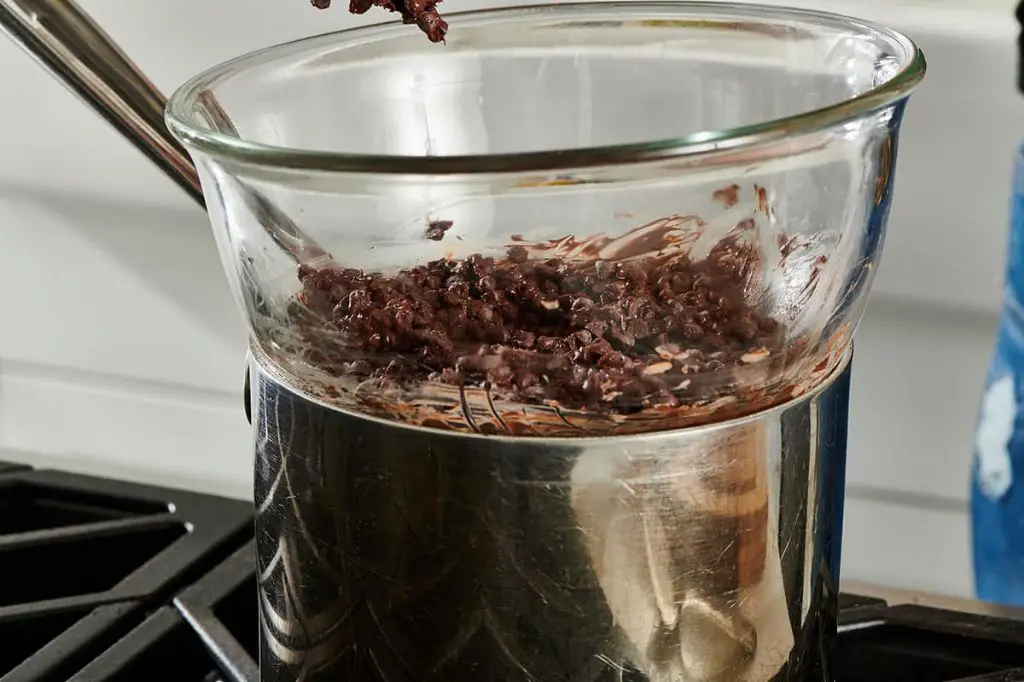
You can mimic a double boiler by placing a smaller pot or bowl inside a larger pot partially filled with water. The key is that the water should not come into direct contact with the inner bowl/pot. Keep the water at a bare simmer and monitor it carefully. This makeshift double boiler method works for gentle heating applications like melting chocolate (Source).
For small amounts, a heat-proof bowl set over gently simmering water also does the trick. Glass and metal bowls conduct heat well. Just make sure it is stable and keep an eye on the water level in the pot below.
Pros and Cons
Using a double boiler has several advantages and a few potential disadvantages to consider:
Pros:
- Gentle, even heating – The steam transfers heat slowly and evenly, preventing scorching or burning.
- Precise temperature control – The water bath regulates the temperature, allowing foods like chocolate or cheese to melt slowly without overheating.
Cons:
- Can take longer – Foods cook more slowly since the heat is gentle.
- Need to refill water – The bottom pot may need topping up with water occasionally.
As this source explains, the gentle, even heating is the main advantage of a double boiler. The cons mainly relate to the specialized equipment and refilling the water. Overall, double boilers excel at delicate tasks like melting chocolate.
Final Tips
Here are a few final tips to maximize success when using a double boiler:
Use the right heat level to maintain a simmer and gentle steam in the bottom pot. Bringing the water to a rapid boil will make the temperature too hot. Keep the heat low so the water stays just below a simmer.
Allow the food in the top pot to come up to temperature gradually. The gentle heat from the steam allows the food to heat slowly and evenly. This prevents scorching or curdling that can happen if the food heats too quickly.
Stir the food regularly as it cooks for even heating throughout. The steam rising from the bottom pot heats the top pot mainly from the bottom. Stirring helps distribute the heat so no spots get much hotter than others.
Key Takeaways
Using a double boiler provides temperature control, gentle heating, and easy melting. The two pans allow indirect heating, with the bottom pan directly contacting the heat source while the top pan contains the food you want to cook gently. Even though the pans are in close contact, the water does directly touch the bottom pan as it heats and produces steam.
Here are the key facts to remember about double boilers:
- The double boiler technique gives more control over gentle, even heating.
- Water makes direct contact with the bottom pan, which protects food in the top pan from scorching.
- A double boiler is useful for delicate foods that require low heat, like custards, sauces, chocolate, and cheese.
Using an improvised or purpose-built double boiler provides temperature control for finicky foods that need gentle heating. The direct contact of water with the bottom pan is what makes the steamy, indirect heating possible in the top pan.

